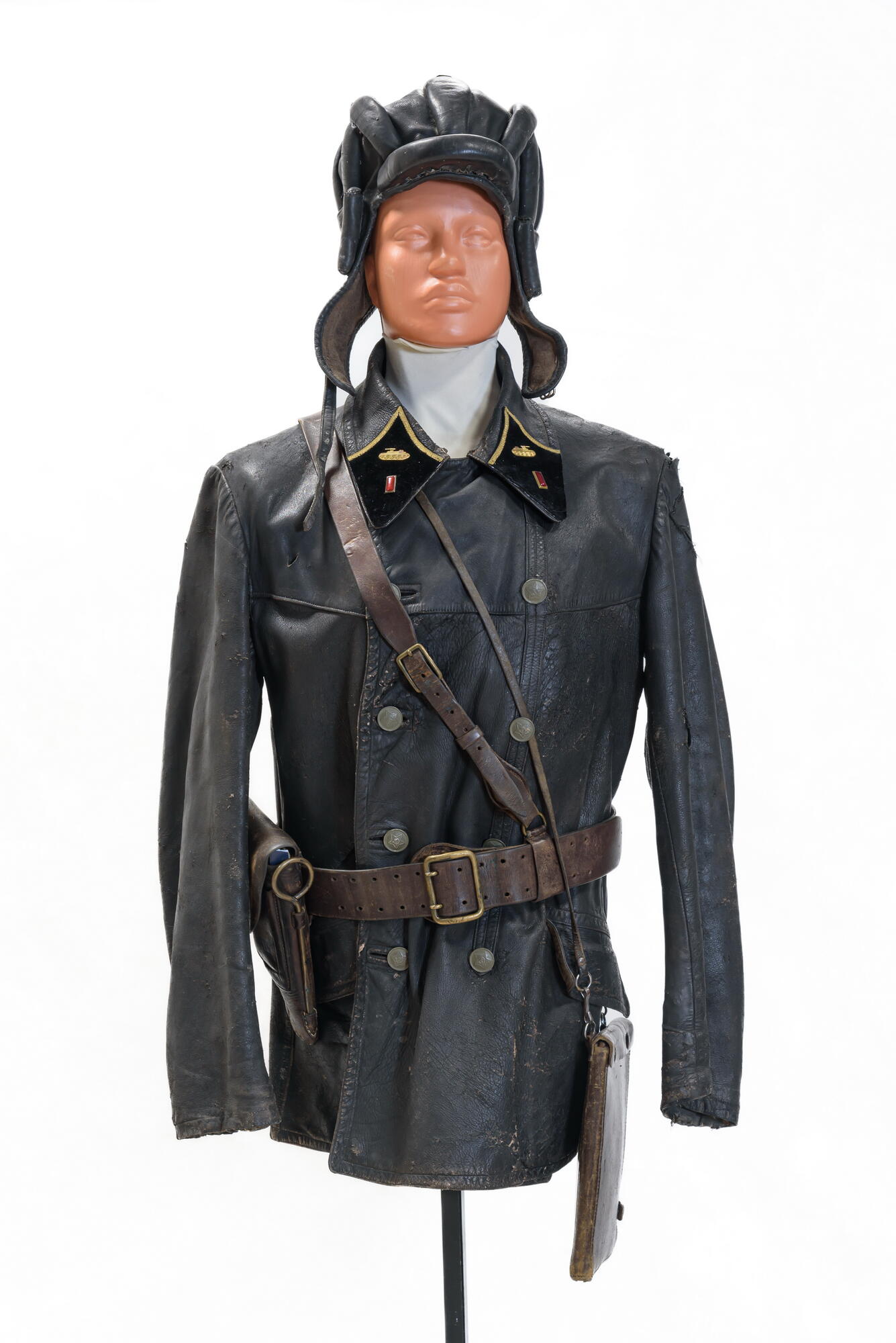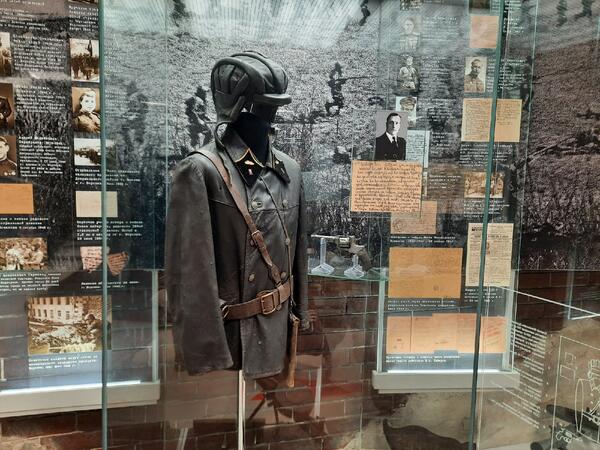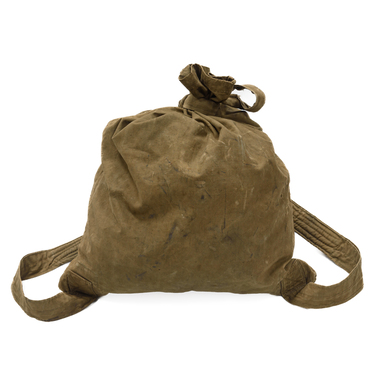By 1934, the tank forces of the USSR were growing and actively developing with many hundreds of tanks in its arsenal. A need arose to develop tanker uniforms with a communication helmet.
Communication helmets were made of durable and dense black cloth, which was sometimes referred to as “kirza” in official documents, however, it is important not to confuse it with the material of soldiers’ boots (also called “kirza”), with which this fabric had nothing to do. Another, rarer material for the helmet was thin black leather.
Special safety goggles were used to protect the eyes of tankers from dust, branches and small stones while driving. Their designs were very different, but the displayed photo shows the most common type, which has remained almost unchanged and is used in this day and age.
Until February 1, 1941, the uniforms of tankers, including the gymnastyorka (a smock), differed from other branches of the armed forces in color — it resembled steel. However, later this difference was eliminated, and in the spring of 1941, the tankers received a summer-appropriate gymnastyorka and trousers of a standard green color. By June 22, 1941, the rank and file and junior commanding staff of the tank troops were dressed in soldiers’ gymnastyorkas of the 1935 model with tanker collar patches.
The gymnastyorka had a turn-down collar that featured patches with a field and trim in a color associated with the specific type of troops, in this case — black and red. In the corner of the patch was the emblem of the armed forces — a golden stylized silhouette of a BT tank.
As a type of special clothing for tankers, the coveralls appeared in the 1920s. In the Red Army, the coveralls for tankers were accepted a decade later. The main purpose of the coveralls was to protect the uniforms from dirt when driving in a tank and carrying out maintenance work.
The jumpsuit was a garment incorporating trousers and a jacket. A flap was made at the back of the waist. The jumpsuit featured a turn-down collar with a hook-and-eye closure. The sleeves were with three-seam, elbow pads and long straps used to tighten the bottom of the sleeve. They did not have cuffs. At the bottom of the sleeve were two adjuster buttons for the straps. The trousers had straps at the bottom for tightening, also fastened with adjuster buttons. Knee pads in the shape of a diamond were sewn on the front part of the trousers, and leather pads for support were sewn at the back.
The belt was sewn to the detachable flap at the back and tightened with a metal buckle at the front. Two hooks were on the sides of the jumpsuit at the waist, onto which metal flap loops were attached to keep the jumpsuit buttoned-up.
Communication helmets were made of durable and dense black cloth, which was sometimes referred to as “kirza” in official documents, however, it is important not to confuse it with the material of soldiers’ boots (also called “kirza”), with which this fabric had nothing to do. Another, rarer material for the helmet was thin black leather.
Special safety goggles were used to protect the eyes of tankers from dust, branches and small stones while driving. Their designs were very different, but the displayed photo shows the most common type, which has remained almost unchanged and is used in this day and age.
Until February 1, 1941, the uniforms of tankers, including the gymnastyorka (a smock), differed from other branches of the armed forces in color — it resembled steel. However, later this difference was eliminated, and in the spring of 1941, the tankers received a summer-appropriate gymnastyorka and trousers of a standard green color. By June 22, 1941, the rank and file and junior commanding staff of the tank troops were dressed in soldiers’ gymnastyorkas of the 1935 model with tanker collar patches.
The gymnastyorka had a turn-down collar that featured patches with a field and trim in a color associated with the specific type of troops, in this case — black and red. In the corner of the patch was the emblem of the armed forces — a golden stylized silhouette of a BT tank.
As a type of special clothing for tankers, the coveralls appeared in the 1920s. In the Red Army, the coveralls for tankers were accepted a decade later. The main purpose of the coveralls was to protect the uniforms from dirt when driving in a tank and carrying out maintenance work.
The jumpsuit was a garment incorporating trousers and a jacket. A flap was made at the back of the waist. The jumpsuit featured a turn-down collar with a hook-and-eye closure. The sleeves were with three-seam, elbow pads and long straps used to tighten the bottom of the sleeve. They did not have cuffs. At the bottom of the sleeve were two adjuster buttons for the straps. The trousers had straps at the bottom for tightening, also fastened with adjuster buttons. Knee pads in the shape of a diamond were sewn on the front part of the trousers, and leather pads for support were sewn at the back.
The belt was sewn to the detachable flap at the back and tightened with a metal buckle at the front. Two hooks were on the sides of the jumpsuit at the waist, onto which metal flap loops were attached to keep the jumpsuit buttoned-up.



